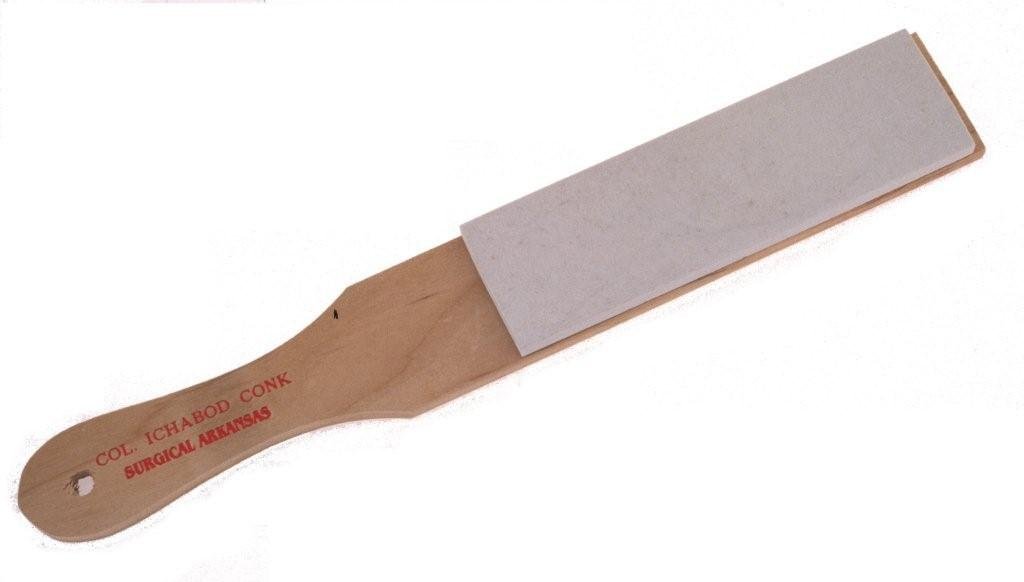kelbro
Alfred Spatchcock
Those narrow blades are sometimes challenging to learn on. Not a size that I would recommend for a newbie.
Grandfather and great grandfather SR shaving kit. I think about that pretty frequently. Country and small town folk, so they had to be reasonably self-sufficient. They certainly would not have been honemeisters or razor restorers.
Sufficient kit then:
an initially honed razor
a leather strop
a pasted strop and paste
a touch up hone
A damaged razor was discarded and easily replaced.
Sufficient kit now: (shaving, not restoring)
an initially honed razor
a leather strop (+1 Tony Miller)
a pasted strop progression, balsa and either diamond or CBN
a touch up hone or a lapping film
suggestions for reasonable touch up stones?
thanks all.
camo
This Naniwa:
View attachment 1087666
or its 10mm thick younger brother.
Or a strip of wet, well smoothed down 3M AlOx lapping film on a marble tile or cast acrylic block:
Ivory = .3 micron = ~60,000 grit
Green = 1 micron = ~ 14,000 grit
Other lapping films are available.
you mean the 10k grit then that is 10mm?
camo
you mean the 10k grit then that is 10mm?
camo
I meant the same 12k grit in the less expensive 10mm thickness. If you are just using it for razor touch up and are not restoring razors or polishing knives a 10mm thickness of synthetic rock will last a lifetime. For touchup you will be using as little pressure as you can while not having the razor levitate - so not much hone wear.
Basically the synthetics are less expensive if you get thinner/smaller hones. They get rapidly less expensive as the stones get coarser. I’m no honemeister, but for practical razor touch up, it seems that folks use 8k grits and above.
For example, Portland Razor Company teaches beginning maintenance honing using a Norton two-sided 4k/8k synthetic.
I will send you some honing supply links if you want. Sharpening Supply and Best Sharpening Stones are two places where I have gotten good prices and service. Beware, it is easy to go down a hone rathole.
What's a pdsq hone? Google results lead here.Actually that may be a PDSQ hone. Can’t say for sure from that pic.
Says Arkansas stone. A little suspicious of the quality just based on the picture but I have no first hand experience with them.What about these Colonel Conk Razor stones I see advertised. They look like maybe a small Arkansas store glued to a paddle?
Does anybody know what they actually are and what grit they correspond to?

This is a genuine Arkansas fine/hard stone. It measures 5.5" x 1.5" and comes in right at 900 grit.Says Arkansas stone. A little suspicious of the quality just based on the picture but I have no first hand experience with them.

comes in right at 900 grit.
This is a genuine Arkansas fine/hard stone. It measures 5.5" x 1.5" and comes in right at 900 grit.
It's a natural stone so you can't actually put a grit number on it. The best you can do is compare it side by side to a synthetic stone and then make your observations.How is this measured? I ask because I'd like to get a better number for some of my stones.
Col. Conk, the instructions that come with the stone say to use water as a lubricant but some people use mineral oil as the lubricant. Do you have an opinion in this regard?This is a genuine Arkansas fine/hard stone. It measures 5.5" x 1.5" and comes in right at 900 grit.